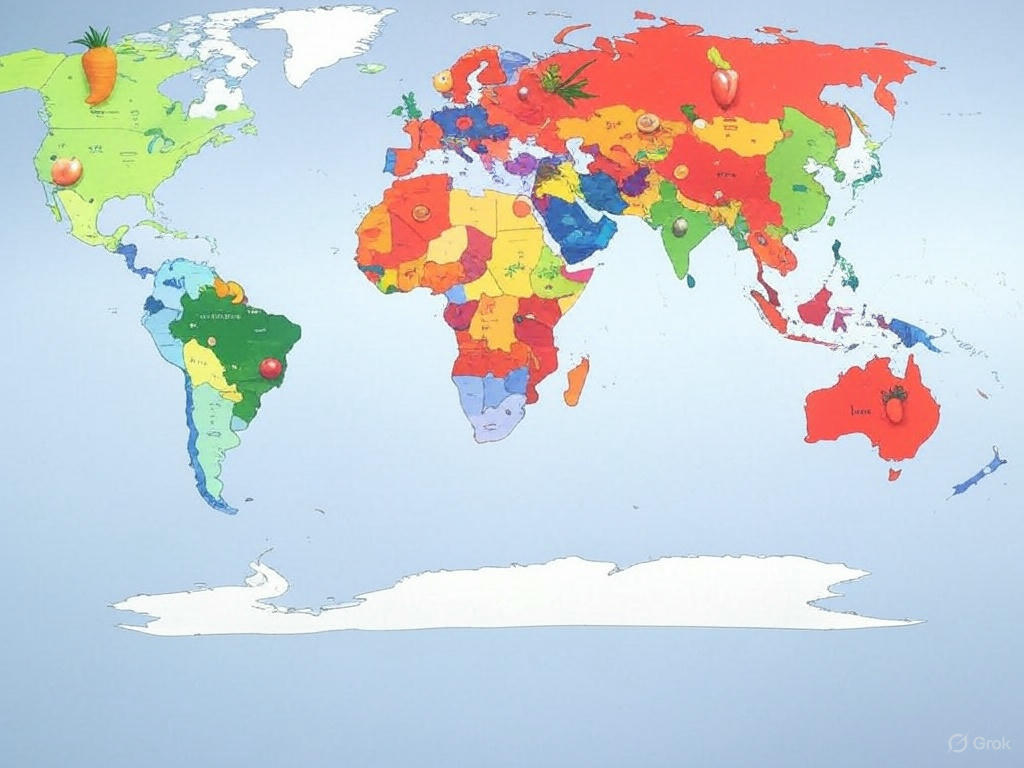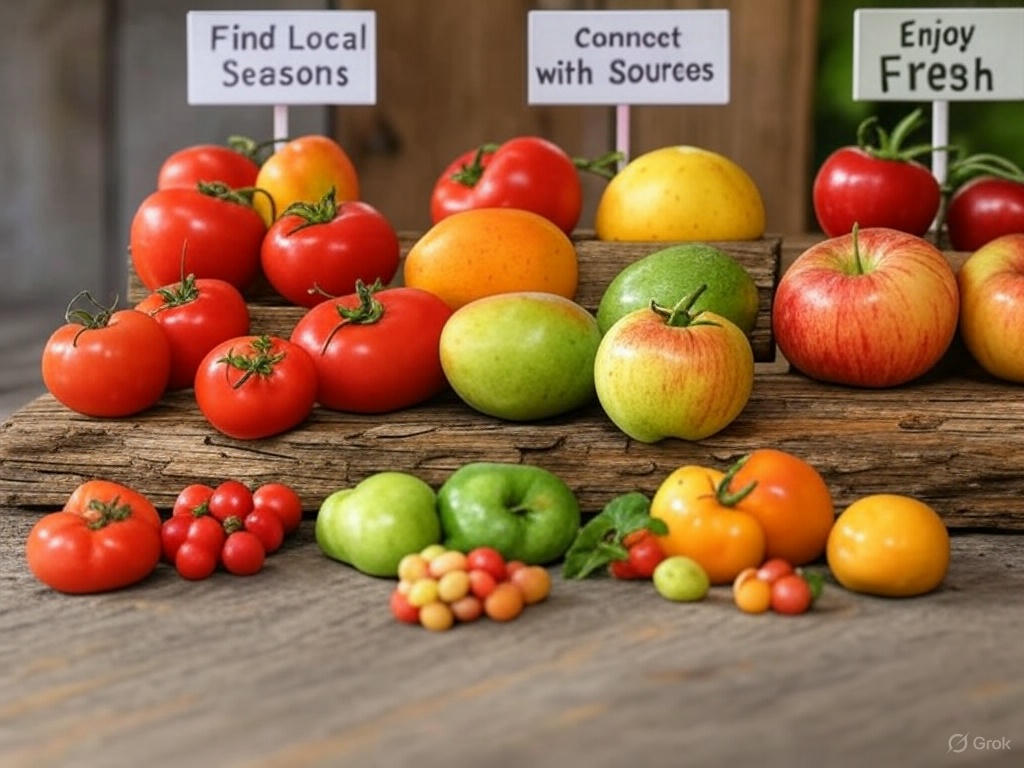Introduction: Benefits of Seasonal Eating 🌍
Eating with the seasons isn’t just a trendy buzzword—it’s a delicious, wallet-friendly, and planet-loving way to enjoy food at its peak. 🌞🍂 Whether you’re in bustling New York, sunny Sydney, or vibrant Mumbai, seasonal eating connects you to nature’s rhythm. In this guide, we’ll explore why it matters, what’s in season when, how to pick the freshest produce, and how tech can help you find local gems. Ready to savor the world, one bite at a time? Let’s go! 🍎
Seasonal eating means choosing fruits, veggies, and herbs when they’re naturally harvested in your region. Why does it matter? Here’s the scoop:
- Flavor Explosion: Produce picked at its prime is juicier, sweeter, and tastier. Think summer strawberries versus those pale winter imposters. 🍓
- Nutrition Boost: Freshly harvested goods pack more vitamins and antioxidants—nature’s gift to your body.
- Cost Savings: When supply is high, prices drop. Your grocery bill will thank you!
- Eco-Friendly: Less need for long-distance shipping or artificial growing means a lighter carbon footprint. 🌱
From the mango orchards of India to the apple farms of Canada, eating seasonally is a universal win. Let’s break it down further.
Section 1: What Produce is in Season When? 🗓️
Seasons vary across the globe, so your plate will look different depending on where you are. Here’s a snapshot of what’s fresh when, with a nod to India and beyond:
Northern Hemisphere (e.g., USA, Europe, North India)
- Spring (March-May): Asparagus, spinach, peas, strawberries.
- Summer (June-August): Tomatoes, zucchini, berries, peaches.
- Fall (September-November): Pumpkins, apples, kale, sweet potatoes.
- Winter (December-February): Citrus (oranges, lemons), root veggies (carrots, beets).
Southern Hemisphere (e.g., Australia, South Africa)
- Flip it! Summer peaks in December-February with mangoes and cherries, while winter (June-August) brings hearty greens and citrus.
Spotlight on India 🇮🇳
India’s diverse climate means seasonal treats vary by region:
- Summer (April-June): Mangoes (the “king of fruits”), lychees, and jackfruit thrive in the heat.
- Monsoon (July-September): Corn, jamun (black plum), and leafy greens like amaranth pop up.
- Winter (November-February): Guavas, oranges, and fresh peas shine in cooler months.

Check local resources like this seasonal produce guide or India’s National Farmers’ Market Directory for specifics near you.
Section 2: How to Select Fresh Produce 🥕
Found your seasonal faves? Now, let’s make sure they’re at their best. Here’s how to shop like a pro:
Look for Clues
- Color: Vibrant hues signal ripeness—think deep red tomatoes or golden mangoes. Avoid dull or spotty items.
- Feel: Firm but not rock-hard (e.g., avocados with slight give) or soft but not mushy (e.g., ripe peaches).
- Smell: A sweet, earthy scent is a green light. No aroma? It’s probably not ready.
Season-Specific Tips
- Summer: Squeeze a melon—ripe ones feel heavy and smell fruity at the stem.
- Winter: Pick citrus with smooth, shiny skin; avoid wrinkly or lightweight fruit.
In India, sniff a mango at the stem—if it’s sweet and fragrant, it’s ready to devour! 🥭 Pro tip: Chat with vendors at local markets—they know what’s freshest.
Freshness Checklist
| Produce Type | Look | Feel | Smell |
|---|---|---|---|
| Mango | Vibrant color (yellow, orange, or red) | Firm but slightly yielding when pressed | Sweet and fragrant at the stem |
| Tomato | Bright, unblemished skin | Firm but not hard | Earthy and slightly sweet |
| Strawberry | Bright red, no white or green | Firm but not mushy | Sweet and fresh |
| Avocado | Dark green to black, no shriveling | Slightly soft when pressed | Mild and nutty |
| Apple | Shiny, unblemished skin | Firm and crisp | Fresh and slightly sweet |
| Banana | Bright yellow with no green | Firm but not hard | Sweet and fruity |
| Carrot | Bright orange, no cracks | Firm and crisp | Earthy and fresh |
| Cucumber | Dark green, no yellowing | Firm and smooth | Fresh and slightly sweet |
| Grapes | Plump, no wrinkles | Firm and attached to stem | Sweet and slightly tart |
| Lemon | Bright yellow, no green | Firm and heavy for size | Fresh and citrusy |
| Papaya | Orange to reddish skin, no green | Slightly soft when pressed | Sweet and slightly musky |
| Eggplant | Deep purple, shiny, no blemishes | Firm and smooth | Mild and fresh |
| Pineapple | Golden yellow, no soft spots | Firm with a slight give | Sweet and tropical |
| Ginger | Smooth, taut skin, no wrinkles | Firm and heavy | Spicy and pungent |
Section 3: Using Tech to Find Local Options 📱
Technology is your seasonal eating sidekick, no matter where you are. Here’s how to tap into it:
Step 1: Apps and Websites
- Seasonal Food Apps: Apps like “Seasonal Food Guide” (global) or “Farmizen” (India-specific) list what’s in season near you.
- Market Directories: Websites like LocalHarvest (USA) or Krishi Network (India) connect you to nearby farms and markets.
Step 2: Community Power
- Search X for hashtags like #SeasonalEating or #FreshProduce to see what locals are raving about. In India, you might find posts about monsoon corn stalls in Delhi!
Step 3: Delivery Services
- Subscription boxes (e.g., “Imperfect Foods” in the US or “BigBasket” in India) deliver seasonal goodies to your door, often sourced from local growers.

Conclusion: Eating with the Seasons 🌈
Seasonal eating isn’t just about food—it’s about syncing with nature, supporting local growers, and treating your taste buds to the good stuff. Whether you’re biting into a juicy mango in India, a crisp apple in Japan, or a tangy kiwi in New Zealand, choosing fresh produce at its peak is a simple way to live better. With handy seasonal calendars and a sprinkle of tech, you can eat smarter all year long.
So, next time you’re at the market, ask: “What’s in season?” Your body, budget, and planet will thank you. Ready to dig in? 🍋🥔
